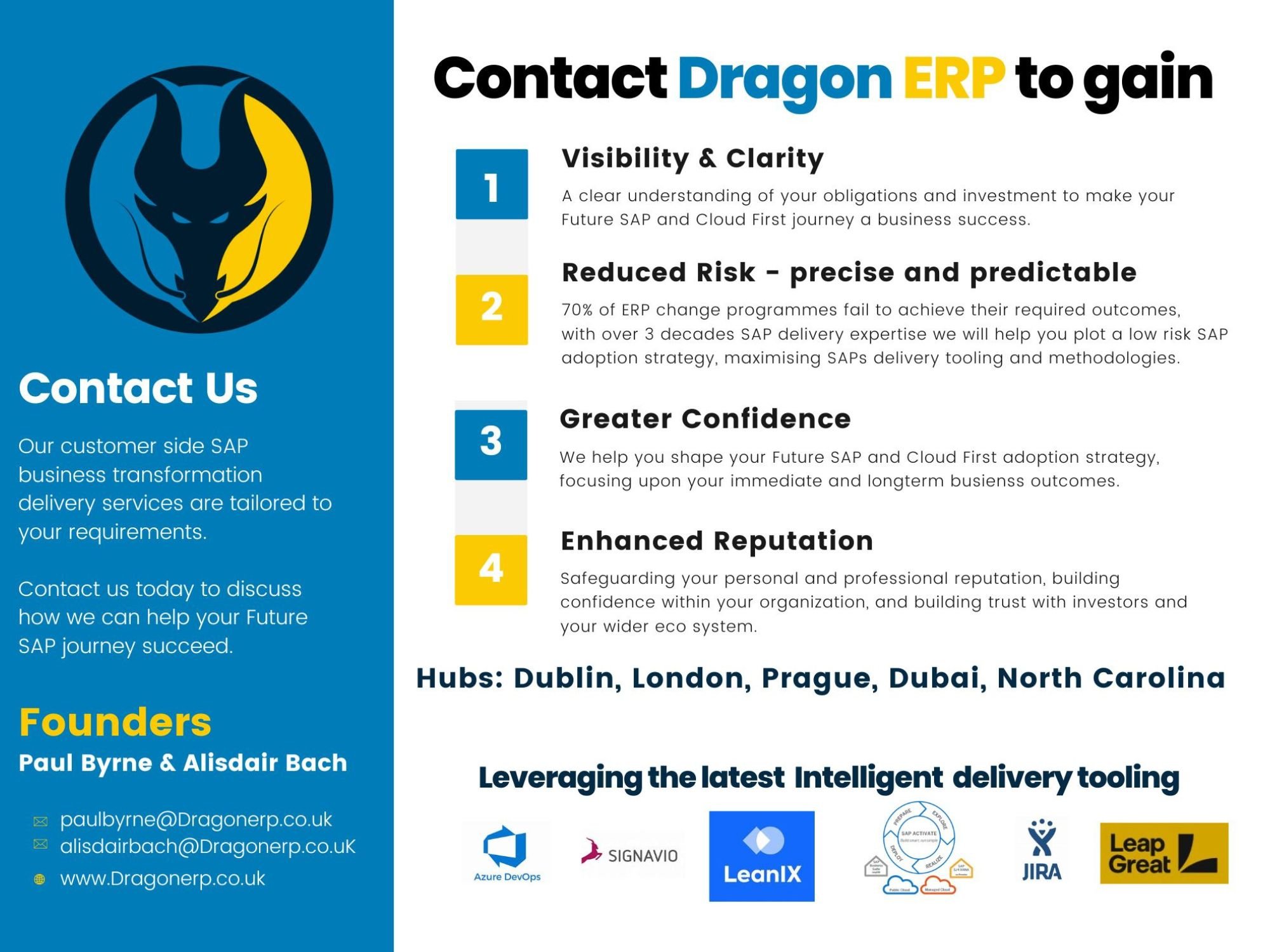Sarbanes and SAP
Dragon ERP - Our AI SAP implementation tooling takes the risk out of your Process Controls
The third in our series of CFO blogs, we look at how SAP enables Sarbanes compliance.
SAP provides organizations with a robust framework of tools, applications, and processes to help them comply with the Sarbanes-Oxley Act (SOX). SOX compliance primarily focuses on enhancing financial transparency, internal controls, and data accuracy. Here’s how SAP facilitates SOX compliance:
1. Internal Controls Framework
SAP enables organizations to design, document, and enforce internal controls over financial reporting, which is a key SOX requirement. The tools include:
• SAP GRC (Governance, Risk, and Compliance): Provides a comprehensive framework to manage compliance, assess risks, and monitor internal controls.
• SAP Process Control: Helps automate and monitor compliance activities, ensuring that control deficiencies are quickly identified and resolved.
2. Audit Trails and Logging
SAP ensures that all key financial transactions and changes to financial data are logged and traceable. This supports SOX requirements for transparency and accountability:
• Change Logs: Record modifications in financial records, user actions, and system changes.
• SAP Audit Information System (AIS): Facilitates internal and external audits by providing detailed reports of system and user activities.
3. Segregation of Duties (SoD)
SOX mandates that critical business processes are divided among individuals to prevent fraud and errors. SAP helps organizations enforce Segregation of Duties by:
• Access Controls in SAP GRC: Prevents unauthorized access by defining roles and limiting user permissions.
• Role-Based Security: Ensures that no single user has complete control over a critical process, like vendor payments or financial reporting.
4. Automated Financial Processes
Automation reduces manual errors, improves accuracy, and enhances compliance with SOX reporting requirements. SAP provides:
• SAP ERP Financials: Automates financial data consolidation, reporting, and reconciliation.
• Real-Time Reporting Tools (e.g., SAP Fiori): Ensures data accuracy by providing instant access to financial information.
5. Real-Time Monitoring and Alerts
SAP tools offer real-time monitoring capabilities to ensure controls remain effective:
• SAP Business Integrity Screening: Identifies potential anomalies and fraud risks.
• Alerts and Notifications: Triggers alerts for deviations from established compliance controls.
6. Documentation and Reporting
SOX compliance requires extensive documentation of financial controls, risks, and audit findings. SAP simplifies this by:
• Pre-Configured Reports: Generates financial reports aligned with SOX standards.
• Document Management Tools: Ensures proper versioning and retention of compliance-related documents.
7. Streamlined Audit Processes
SAP facilitates audits by providing tools to prepare, document, and track audits:
• Centralized Audit Trails: Consolidate data from multiple systems for easy access.
• Compliance Dashboards: Provide real-time insights into the organization’s compliance status.
By leveraging SAP’s GRC suite, financial management tools, and reporting capabilities, organizations can effectively meet SOX requirements while improving their overall governance and operational efficiency.
If you need help shaping your Target Finance Operating Model, then contact a Dragon……
Paul and Alisdair at a SAP Partner day


